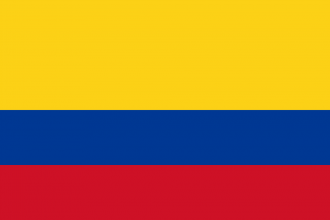Historically, Colombia has shown outstanding economic stability, mainly due its macroeconomic environment and to its openness to global trade and finance. Positive Gross Domestic Product (GDP) growth rates have been the norm for at least the last two decades. In 2007, Colombia’s GDP registered a growth of 6.9%, a figure that was among the highest rates in Latin America. In 2008, the country’s economy decelerated mainly due to the global financial crisis that led to the weakening demand for Colombia's exported products. Nevertheless, the economy quickly recovered. In 2011, the economy grew by 6.6% and remained at high levels in 2012 (4%), 2013 (4.9%) and 2014 (4.4%). This success is largely attributed to the fact that inflation remained low and stable and that the country experienced a rapid expansion in the extractive industries, such as oil, coal, and nickel. In 2015, the country was affected by the global economic downturn and lower oil prices, and as a result economic growth slowed down to 3.1%.
According to analysis carried out by the Organisation for Economic Co-operation and Development (OECD), economic growth was to further moderate in 2016, while it was projected to strengthen in 2017, mainly due to the planned investments by the government on infrastructure, as well as the recovery of the external demand.
Colombia's sustained growth helped reduce poverty and ameliorate the living conditions of Colombian citizens. It is indicative that the GDP per capita has doubled over the last decade, going from some 3710 US dollars in 2006, to about 6060 in 2015.
Thanks to its geographical location, the country has become an export hub for international markets. More on that, Colombia has signed several trade facilitation agreements with different countries and regional blocs, such as CAN (customs union between Bolivia, Peru, Colombia and Ecuador), Mercado Común del Sur (MERCOSUR), the Caribbean Community (CARICOM), the European Free Trade Association (EFTA) and the US-Colombia Free Trade Agreement.
In 2015, exports from Colombia amounted to 35.98 billion US dollars, declining by some 34.1% year-on-year. The decline in export values was partly due to the drop in the price of oil, Colombia’s main export product. It is indicative that sales of fuels and mining products accounted for most of the decline (fell by some 46.11%), followed by the industrial sector sales (fell by some 18.36%) and that of agricultural products (fell by some 5.07%). To corroborate the fact that historically fuels and mining products have been Colombia's main exported items, in 2015, this category constituted the 48.8% of total exports, while industrial/manufacturing items made up nearly 44.3% and agricultural products some 6.7%.

